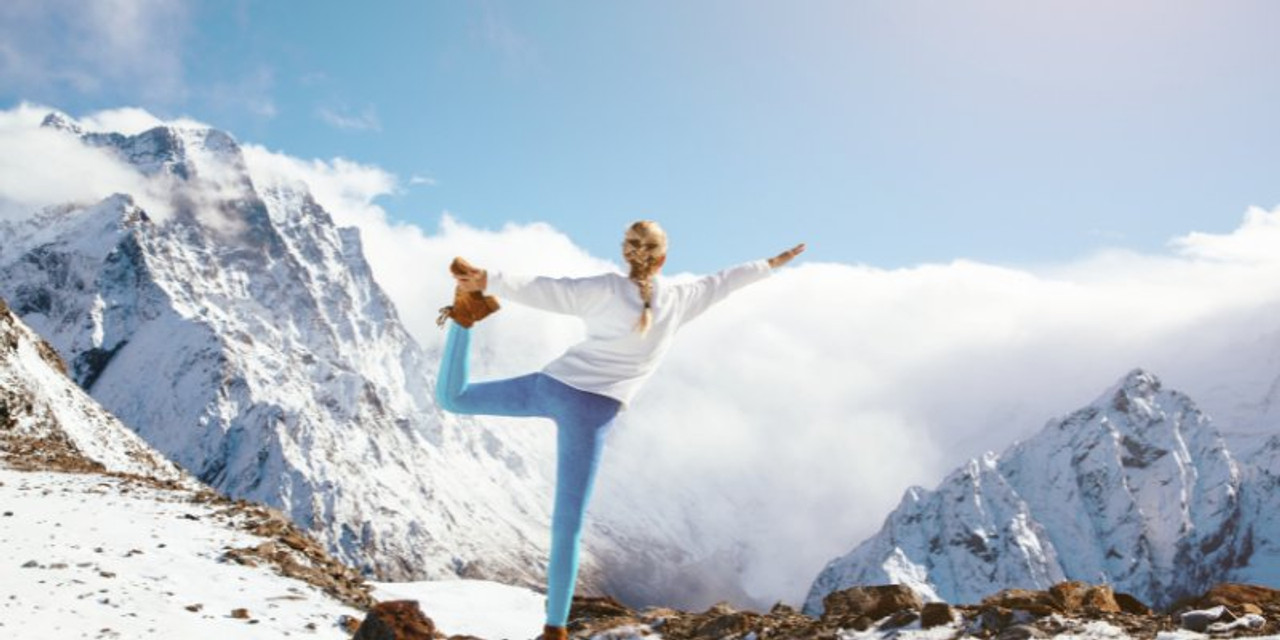5 Stretches to do Before You Snowshoe
Posted by Crescent Moon on Oct 25th 2023
Snowshoeing is a fantastic winter activity that allows you to explore the great outdoors in a snowy wonderland. Whether you're an experienced snowshoer or just starting, it's crucial to prepare your body for the demands of this activity. Proper stretching not only helps improve your performance but also reduces the risk of injuries. In this guide, we'll introduce you to five essential stretches that will help you stay limber and comfortable while snowshoeing.
Snowshoe Stretch 1 - Quadriceps Stretch
The quadriceps (front thigh muscles) are heavily engaged when snowshoeing, especially when ascending hills or navigating uneven terrain. Stretching them helps prevent tightness and discomfort.
How to do a quad stretch
- Stand on one leg, one knee touching the other. You can hold a chair or the wall for balance if needed.
- Grab your opposite foot, using your same side hand, and pull your foot towards your butt. ...
- Hold the position for 20 to 30 seconds, then repeat, switching from your left leg to your right.
Snowshoe Stretch 2 - Calf Stretch
Your calf muscles play a crucial role in stabilizing your feet and ankles while snowshoeing. Stretching them can alleviate calf tightness and reduce the risk of muscle strains.
How to stretch your calves before you snowshoe
- Stand up and face a wall with both of your hands about eye level against the wall flat with legs hip-width apart.
- Slide one leg back about one stride length behind you while pressing your back heel to the ground
- Gently bend your front knee until you feel a stretch in your back leg.
- Hold this stretch for 15-30 seconds and then switch sides
Snowshoe Stretch 3 - Hip Flexor Stretch
Snowshoeing involves a lot of hip flexion, especially when lifting your legs to step through deep snow. Stretching the hip flexors helps maintain flexibility and prevent discomfort.
How to stretch your hip flexors:
- With a straight back, kneel down with your hands on 1 knee, and the other leg stretched straight behind you.
- Tuck your hips under and press through the front of your hips
- Hold for 15-45 seconds, then switch legs
Snowshoe Stretch 4 - Hamstring Stretch
Snowshoeing often involves varied terrain and climbing, which can strain the hamstring muscles. Stretching them helps maintain flexibility and reduce the risk of hamstring injuries.
How to do a hamstring stretch before you snowshoe:
There are several ways to stretch your hamstrings, we're going to focus on standing options that can be done outside easily. The first option, which is perfect to start to warm up the muscles is to bend over and reach for your toes while pushing your chest towards your thighs
Here is another option for a deeper stretch
- Place the heel or ankle of one leg on something about waist-high or a little lower like a park bench.
- Bend at your hips to bring your chest towards your thigh.
- Hold for 30 seconds.
- Switch legs and repeat.
- Do this exercise two to three times with each leg.
Ensure you keep your back straight. A straight back will also provide some protection for your back.
Snowshoe Stretch 5 - Lower Back Stretch
Snowshoeing can involve a lot of bending and twisting, putting strain on your lower back. This stretch helps alleviate tension in this area.
How to do stretch your low back before you snowshoe
- Stand up with your arms overhead, hands clasped together.
- Breathe in, a full belly breath.
- Pull your arms back until you feel a nice tug on your back muscles.
- Breathe out and bend over as you clasp your hands together behind your back.
- Tug your arms gently, feeling a nice little stretch in your back.
Snowshoe Stretches and Warm Up Final Thoughts
- Always warm up your muscles with light aerobic exercises like jogging in place or jumping jacks before stretching.
- Perform each stretch slowly and gently, avoiding any sudden or jerky movements.
- Do not push yourself into painful stretches. Stretch only until you feel mild tension.
- Hold each stretch for 20-30 seconds and repeat as needed.
- Stretch both before and after your snowshoeing adventure to improve flexibility and prevent muscle soreness.
Incorporating these stretches into your snowshoeing routine will help keep your muscles and joints limber, allowing you to move more efficiently and comfortably in the snow. Remember that proper stretching is essential for preventing injuries and enhancing your overall snowshoeing experience. Stay safe and enjoy your winter adventures!
Check out all of our foam snowshoes, aluminum snowshoes and snowshoe accessories.
Foam Snowshoes – Aluminum Snowshoes – Snowshoe accessories
Check out all of our foam snowshoes, aluminum snowshoes and snowshoe accessories. Foam Snowshoes - Aluminum Snowshoes - Snowshoe accessories

